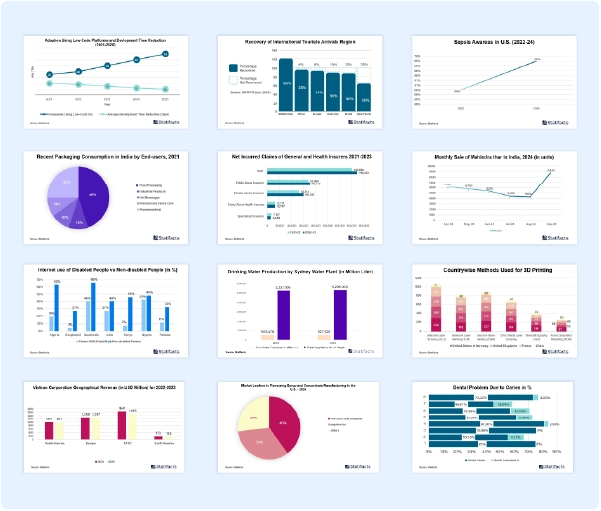The global cell surface marker detection market size was estimated at USD 5,730 million in 2024 and is projected to be worth around USD 12,950 million by 2034, growing at a CAGR of 8.5% from 2025 to 2034.
Cell Surface Marker Detection Market Report Highlights
- North America held the largest share of the cell surface marker detection market in 2024.
- Asia Pacific is projected to host the fastest-growing market in the coming years.
- By product, the reagents & kits segment underwent notable growth in the cell surface marker detection market during 2024.
- By product, the hematology analyzers segment will gain a significant share of the market over the studied period of 2025 to 2034.
- By application, the disease diagnosis & identification segment enjoyed a prominent position in the cell surface marker detection market in 2024.
- By application, the research & drug discovery segment is predicted to witness significant growth in the market over the forecast period.
Industry Valuation and Growth Rate Projection
| Industry Worth |
Details |
| Market Size in 2025 |
USD 6,220 Million |
| Market Size by 2034 |
USD 12,950 Million |
| Market Growth Rate from 2025 to 2034 |
CAGR of 8.5% |
The cell surface marker detection market refers to the production, distribution, and use of cell surface marker detection which is the separation of fluorescent cells by flow cytometry under the detection of a fluorescence activation system using mainly the feature of the cell surface with a specific membrane protein, which is bound by a specific antibody. The most common cell surface markers are CD antigens, also known as CD molecules and clusters of differentiation. In terms of physiology, CD molecules can act in many ways and may act as ligands or receptors important to the cell.
Cell surface markers that are recognized by antibodies have been at the forefront of cell phenotyping for many years. This approach can help to resolve complex cell populations and importantly can also isolate target cell types for downstream functional studies. Cell surface markers are used to classify cells according to their markers. This data is used to identify different kinds of cells to cells infected with HIV. Cell surface markers are protein molecules, also known as receptors, that coat the surface of all the cells and can bind to other cells, surfaces, or proteins. They are used in vivo to signal other cells and to induce functionally significant cellular responses, for example, to stimulate the production of a particular protein.
Rising funding for life science research is driving the cell surface marker detection market. Research funding benefits include well-funded projects that can lead to more comprehensive studies, yielding robust and reliable findings. This can support large-scale data collection and innovative statistical analysis. There are practical reasons that the life sciences are valuable. The study of the life sciences lends important insights into disease processes and allows the development of new therapeutics and advanced medical devices, thereby directly enhancing human health.
Research enhances services and treatments not just for us but also for future generations. It helps develop new tests for diagnosis, treatments, and processes that may help children or even grandchildren. We may gain access to treatments that are not yet readily available to the general public. Research allows us to pursue our interests, learn something new, hone our problem-solving skills, and challenge ourselves in new ways. Studying the life sciences will provide us with a foundation of scientific knowledge and ways of exploring the world. The life sciences pervade so many aspects of our lives, from healthcare to the environment to debates about stem cell research and genetic testing.
Advancements in diagnostic technologies are driving the growth of the cell surface marker detection market. Advanced technologies like artificial intelligence (AI) and sophisticated imaging techniques minimize the chances of misdiagnosis. This leads to better treatment outcomes. Early detection is key to successful treatment. Technologies like AI-powered analysis and point-of-care testing allow earlier diagnoses. Diagnostics plays an important role in clinical decision-making. Access to effective and timely diagnostic services is critical to providing high-quality care, reducing waiting time for treatment, and enhancing health outcomes. By using AI algorithms to analyze large amounts of medical data and identify patterns and relationships, general AI for medical diagnostics can transform the field of medicine, leading to enhanced patient outcomes and a more efficient and effective healthcare system.
The development of genomic and proteomic multiplex technologies has enormously amplified biomarker discovery and application to diagnostic and therapeutic decisions in clinical practice. New technologies are now available that simultaneously identify a wide spectrum of biomarkers and save time and costs. Getting a diagnosis gives a name to whatever experiencing and allows you to make sense of it.

